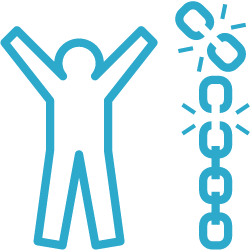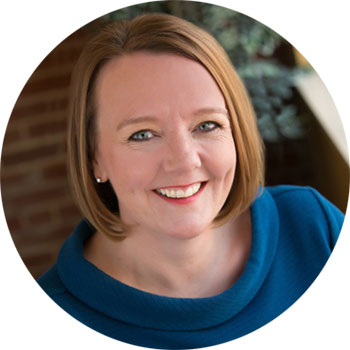[Research] Freelance Translator Survey 2020:
2. Working as a professional translator
Working hours, tools, professional development, perks and challenges
Published on 30 November 2020, Last updated 3 December 2020
Working as a freelance translator
Translation and other linguistic services
Of the 1,510 freelance translators who took part in the survey, 63% (n=957) indicated that they work exclusively as a freelance translator, 19% (n=286) work as both a translator and an interpreter, and the remaining 18% combine translation with other freelance language-related services such as editing or copywriting.
Reasons for offering other linguistic services alongside translation
The 37% of the sample (n=553) who said they provide other services in addition to translation were asked to indicate which of a number of listed reasons explain why they do so (they were allowed to tick more than one). The percentages of respondents indicating that each of these reasons applies to them are shown below.
The first two statements reflect positive reasons for combining freelance translation with other services, i.e. choosing to provide multiple services or meeting clients’ needs for these. Almost three quarters of respondents who provide multiple services (73%) said that they choose to do so, while 36% indicated that they do so because their clients require this range of services.
The third and fourth statements reflect more negative reasons why respondents are forced to offer multiple services, i.e. not being able to secure enough work as a translator or as a provider of other services. Almost a third of the respondents offering multiple services (30%) are doing so because they cannot secure enough translation work, and 13% are reportedly doing so because they cannot secure enough work in their other service offering areas.
We also asked respondents who provide multiple services to indicate whether they would prefer to work exclusively as a translator, exclusively as an interpreter, or exclusively as a provider of other services. Relatively few ticked these responses, suggesting that most respondents who provide freelance translation alongside other services are happy to do so. However, 14% of those offering multiple services said they would prefer to work only as a freelance translator.
Language combination
Of the 1,410 respondents who answered the question on what their main language combination was, 1,242 work from or into English (783 from English and 459 into English), and 168 translate between languages other than English.
For language combinations with English, the top three are Spanish (232), French (197), and German (152), as follows:
| Language combination | No of translators |
| English into Spanish | 158 |
| Spanish into English | 74 |
| English into French | 104 |
| French into English | 93 |
| English into German | 65 |
| German into English | 87 |
For language combinations between languages other than English, the top three languages are German (78), French (49), and Italian (38).
| Language combination | No of translators |
| from German | 48 |
| into German | 30 |
| from French | 26 |
| into French | 23 |
| from Italian | 16 |
| into Italian | 22 |
Areas of expertise
Respondents were also asked how many sectors, industries or subject areas they offer specialist expertise in. The distribution of responses is shown below.
The figure above shows that the sample is a very diverse group in terms of numbers of specialist areas, with 11% not specialising at all, 13% offering specialist expertise in five or more areas, 43% having three or four areas of specialism, and 34% being more narrowly specialised in just one or two areas.
When asked to tick up to three on a list of specified subject areas or sectors (or to specify other areas), a very wide range of sectors, industries or subject areas were included. Overall, those mentioned by the largest numbers of respondents (as their first, second or third area of specialism) were:
- Law (313 respondents, 22%)
- Advertising (243 respondents, 17%)
- Business (225 respondents, 16%)
- Medicine (220 respondents, 16%)
- Travel and Tourism (176 respondents, 13%)
- Education (158 respondents, 11%)
- Information Technology (141 respondents, 10%)
- Engineering (115 respondents, 8%)
- Pharmaceuticals (97 respondents, 7%)
Working hours
We asked respondents to specify how many hours on average they work on freelance translation (and related activities) each week. The figure below shows the overall distribution of responses and the breakdown by part-time (less than 30 hours) and full-time (30 hours or more).
Reasons for working part-time
Those working less than 30 hours a week as a freelance translator were asked to indicate the main reason why they work part-time in this role, from a list of specified factors, or to provide another reason for working part-time.
The above figure shows that there is a wide range of reasons why respondents are working part-time as a freelance translator. Just over a quarter (27%) are reportedly doing so because they are unable to secure enough translation to be working full-time on this. Around a quarter (24%) of all those working part-time are doing so because they choose to work part-time in order to balance work with family time. Roughly another quarter (27%) in total indicated that they have another job as an employee, working either full-time or part-time, and 8% said they have another freelance job.
Of the 13% (n=77) who gave other reasons for working part-time as a freelance translator, many of these indicated that they were also students, while others were semi-retired or were choosing to work less than 30 hours a week. Several commented that they did not consider this to be part-time. Several were working less than full-time hours due to a disability or health condition.
Men vs women – reasons for working part-time
We also wanted to see if there are marked differences between men and women when it comes to full- and part-time work, both in terms of working hours, and the reasons for working part-time in the case of those who do so.
We excluded from the analysis those respondents who did not identify as male (including transgender men) or female (including transgender women). Two respondents ticked ‘Other’ and 20 preferred not to say. For this part, we analysed the responses from 1,008 translators.
With regard to working hours, 38% of men and 41% of women work part-time.
When it comes to the reasons for working part-time, these were similar in most areas: ‘I have a part-time job as an employee’ (9% of women, 7% of men), ‘I have another part-time freelance job’ (9% of women, 10% of men), ‘Insufficient availability of translation work’ (27% of women, 28% of men), and ‘Other’ (12% of women, 14% of men).
However, there were two reasons where the differences between men and women were noticeable: ‘I have a full-time job as an employee’ (14% of women vs 23% of men) and ‘I choose to work part-time to balance work with family time’ (29% of women vs 18% of men).
Profiles of freelance translators who work part-time and of those who work full-time
We also wanted to see how similar or different the profiles of translators who work part-time and those who work full-time are. We looked at areas such as: years of experience, educational background, specialist areas, use of computer-assisted translation (CAT) tools, challenges, professional membership, Continuing Professional Development (CPD), whether they work with translation agencies and/or direct clients, client acquisition, their preferred method of communication, if they have a website, business practices, rates, insurance, gender, and age.
| Freelance translators who work part-time | Freelance translators who work full-time | |
| Years of experience | 5-10 years (23%) | 10-15 years (23%) 5-10 years (23%) |
| Education/background | Degree in languages (40%) Degree in a different subject (21%) Degree in translation (26%) Postgraduate degree in translation (20%) | Degree in languages (39%) Degree in a different subject (23%) Degree in translation (32%) Postgraduate degree in translation (30%) |
| Specialist areas | 3-4 specialist sectors (38%) | 3-4 specialist sectors (46%) |
| Use of CAT tools | 39% use CAT tools frequently 30% never use CAT tools | 69% use CAT tools frequently 12% never use CAT tools |
| Main challenge | Low rates of pay (57%) | Low rates of pay (61%) |
| Professional membership | 39% are members of a professional translation association | 53% are members of a professional translation association |
| Continuing Professional Development (CPD) | 25% do less than 10 hours of CPD annually 15% do more than 60 hours of CPD annually | 16% do less than 10 hours of CPD annually 22% do more than 60 hours of CPD annually |
| Clients – agencies | 66% work with agencies | 88% work with agencies |
| Clients – direct clients | 84% work with direct clients | 78% work with direct clients |
| Client acquisition | Referral / word of mouth 74% | Referral / word of mouth 76% |
| Preferred communication method | 84% prefer email | 93% prefer email |
| Online presence (website) | 33% have a website | 45% have a website |
| Business practices – quotations | 51% follow up quotes | 54% follow up quotes |
| Business practices – feedback | 54% sometimes ask for feedback | 59% sometimes ask for feedback |
| Professional Indemnity Insurance | 18% have insurance | 28% have insurance |
| Demographics – gender | 79% female | 76% female |
| Demographics – age | 35-44 years | 35-44 years |
As it can be observed, there are many areas where there are few or no differences between the two groups. We also looked at the rates charged by the two groups and the differences are insignificant (2% difference on average).
Working locations
We asked respondents to indicate the percentage of weekly working time, on average and in normal circumstances, that they spend working as a freelance translator in a number of specified locations. The first figure shows the percentages of respondents who work in each location at least some of the time, and the second figure shows the average percentage of weekly time spent in each location for those who work there at least some of the time.
The above data reveal that:
- 99% of the survey respondents (1,283 out of 1,296) work at home at least some of the time, and the average amount of time spent working at home is 87%.
- 32% work some of the time in public places such as coffee shops, and the average amount of weekly working time working in these types of locations is 9%.
- 30% work while travelling and spend an average of 6% of their working time doing so.
- 25% work at least some of the time in a shared or co-working space, and the average amount of time spent working in this type of location is 14%.
- 22% spend some weekly work time in an office outside of their home that they own or lease, with an average of 17% of working time spent in this location.
- Finally, 18% cited other locations that they spend time working in each week, with an average of 12% of working time spent in these. These other locations include clients’ premises, universities, libraries, courts, hotel rooms and in the car.
Use of tools and resources
The survey asked respondents whether they use computer-assisted translation (CAT) tools in their work, and the distribution of responses is shown below. Most of the respondents (79%) indicated that they use CAT tools at least some of the time, and more than half (56%) use CAT tools frequently.
‘The State of the Linguist Supply Chain’ report from CSA Research shows a similar distribution: 66% of their respondents use CAT tools and translation memory (TM) on most of their projects, 22% use them if their clients require it, and 12% reported they never use such tools.
Delving deeper, we looked at the use of CAT tools per age category and the data showed that 33% of the under 25s, 31% of those aged between 55-64 years, and 42% of those over 65 never use CAT tools.
For the other age groups, the percentages of those who never use CAT tools are: 15% (25-34 years old), 12% (35-44 years old), and 16% (45-54 years old).
Perceived benefits of CAT tools
We asked the respondents who use CAT tools to indicate up to three main perceived benefits of these. The percentages citing each factor as a benefit of using CAT tools are shown below.
The main perceived benefit of CAT tools, according to this group of freelance translators, is the ways in which they provide consistency across translations – this was mentioned as a benefit by 83% of those who use such tools. The next most commonly cited benefits were shorter turnaround times (saving time), mentioned by 65% of those using CAT tools, and quality assurance features, mentioned by 46%.
Many respondents specified ‘terminology management’ as an ‘other’ benefit of CAT tools, while others indicated that they are required to use these tools by their clients.
Reasons translators don’t use CAT tools
We also asked those respondents who never use CAT tools to indicate the main reason for this. The most commonly cited reason was not having a perceived need for these tools. 17% of those not using CAT tools indicated that their lack of technical knowledge is the main reason why they don’t use them, and 13% cited cost as the main reason.

As an assiduous CAT tool user, I’m unsurprised by the high proportion of translators who use a CAT tool in their work. The main benefits of CAT tools cited by respondents show why it makes sense to do so. CAT tools ensure consistency through translation memories to store past translations and termbases to keep a record of individual clients’ terminology choices; they save time by offering similar sentences that have been translated in the past, inserting ready-localised strings such as dates and numbers into the target text, and autocompleting snippets to save typing; and they offer quality assurance features that go deeper than a Word spell and grammar check by comparing source and target segments to spot inconsistencies.
Why, then, do a fifth of translators work without a CAT tool? Many said they simply didn’t need one, and I can only hypothesise that these respondents reflect two extremes: those who translate poetry or novels, or are free spirits who dislike having their writing trapped in small boxes, and, at the other end of the scale, those who translate repetitive forms and certificates and find it quicker to edit individual fields than to start afresh each time.
People who cited a lack of technical knowledge as a reason for not using a CAT tool probably include those who have had a frustrating experience in the past, perhaps running out of the trial period before getting familiar with the tool. A longer trial period (three months or more) would help overcome this problem. I would also recommend setting a learning goal and completing a course to learn how to use your chosen tool. Being a proficient CAT tool user amplifies the benefits cited above, allowing you to produce higher quality work in a shorter time.
Emma Goldsmith is a Spanish-to-English freelance translator specialising in medicine. She is an MITI (Institute of Translation & Interpreting), current Chair of Mediterranean Editors & Translators, and member of Tremédica. Her blog, Signs & Symptoms of Translation, is a treasure trove of Trados gems.
Researching terminology
Respondents were also asked which of a list of sources or strategies they use if they need to conduct research in their translation work (they could tick multiple responses or indicate if they have no need for research). The possible answers were: ‘Online searches’, ‘Specialist books or dictionaries/glossaries’, ‘Consulting specialists’, ‘Consulting other translators’, ‘Consulting with the client’, ‘I never need to conduct research’, and ‘Other (please specify)’. The percentages of respondents indicating that they use each research source or method are shown in the figure below.
Only 2% of respondents indicated that they never have a need to conduct research and very few (1%) cited ‘other’ sources.
Online searches were the most commonly used research strategy, mentioned by 96% of respondents. These were followed in popularity by specialist books or dictionaries/glossaries (by the way, we have put together a very comprehensive resource of more than 3,000 glossaries), cited by 73% of the sample, and consulting with the client, cited by 71%. Just over half (54%) said that they consult other translators when conducting research, and 39% consult specialists.
Refusing work
Respondents were asked whether they had ever refused or would refuse to take on work in any of a number of specified areas if the content was promoting ideas against their beliefs.
17% (n=221) said they would not refuse work in any areas.
The figure below shows the percentages of respondents who said they have refused or would refuse to take on work in each of the listed areas:
As it can be observed, the topic that most of the survey respondents would refuse to work on is paedophilia/child sexual abuse, with 65% indicating that they held this view.
Just over half (51%) said they would refuse to take on work on the subjects of human trafficking and terrorism. Pornography and get-rich-quick schemes were ticked by 41% and 39% respectively.
Of the 14% (n=172) of respondents who gave an ‘other’ response, many of these commented that whether or not they would refuse work would depend on the specific context and the nature of the content. Of the remainder, the most commonly cited responses related to weapons/arms/military-related topics. Other types of topics mentioned by smaller numbers of respondents included violence/abuse, human or animal rights violations, oil and gas extraction, racism and anything illegal.
Men vs women – refusing work
Most areas mentioned above had similar percentages of respondents from both men and women, but there were a few areas where the difference was more marked:
- animal testing (32% of women and 20% of men would refuse work in these areas)
- meat industry (15% of women, 6% of men)
- pornography (45% of women, 32% of men)
Benefits and challenges of being a freelance translator
We wanted to find out what freelance translators find most enjoyable or satisfying about their work, and what main challenges they face.
Perks of freelance translator life
We therefore first asked the respondents to describe in their own words what they most enjoy about being a freelance translator. 931 respondents answered this question and their responses were analysed and categorised by theme. Based on this analysis, the main perceived benefits of being a freelance translator were identified as:


Freedom (n=600) was by far the thing respondents enjoy the most about being freelance translators – freedom to choose their working hours (n=282), being their own boss (n=119), freedom to choose their working place, be it from home or elsewhere (n=159).
“Freedom (to choose my clients, when and from where to work, to take some time off when needed just to name a few).”
“Freedom (to some extent) of working for/on/with whom/with or where I choose.”

128 translators mentioned work itself as one of the perks – citing things like intellectual challenges, finding solutions, and working with languages.
“You make your own mark on someone else’s publication. You bring a message from a language to another.”
“Translating :)”
“Translation itself is a very joyous work, especially when working with source material that allows use of creativity.”

Learning was cited by 119 respondents as one of the great things about being a freelance translator – researching terminology, learning about various topics (and, as some put it, earning money while doing so).
“Variety and flexibility. Lifelong learning.”
“Learning something new with each project”
“I never stop learning and I love that!”

The variety of work is something that 89 respondents mentioned as one of the best aspects of freelance translator life.
“Possibility to work on a variety of topics”
Other perks translators mentioned in their answers: creativity, the ability to balance work with family life, being able to make a difference, not having to commute, working from home, the translation community.
“Being able to spend more time with my children.”
“[…] the satisfaction I get out of helping people communicate”
“[…] And other translators, IRL and on social media, are generally amazing people.”
Challenges of freelance translator life
We also asked the survey respondents what main challenges or threats they are currently experiencing as a freelance translator, if any. They were asked to choose up to three of twelve factors listed, or to indicate if they are not experiencing any challenges or threats.
7% of the 1,254 respondents who answered this question said that they don’t experience any challenges or threats in their work as a freelance translator. Of the 1,175 respondents who did specify challenges, the percentages indicating that each of the listed factors is a major challenge for them are shown below.

By far the most commonly cited challenge is ‘low rates of pay’, with 59% of respondents saying that this is one of the main challenges they face. This was followed by ‘difficulties of securing work’, experienced as a challenge by 32% of respondents, and ‘the increasing use of machine translation’, seen as a threat by 27% of respondents who answered this question.
It should be noted that this question was intended to capture experiences in normal, pre-COVID-19 circumstances and did not therefore refer to challenges experienced during this time. Due to the timing of the survey, some of those who cited ‘other’ challenges or threats mentioned the negative impact on their supply of work, or concerns that this would happen. Others mentioned factors such as unrealistic client deadlines, work overload, the unpredictability of work supply and difficulties in competing with translators working for unrealistically low rates of pay.
“Some clients believe work can be done by any person who studied English courses.”
“Not the competition from other translators per se, but the needless drive from other translators to push the rates down by offering ridiculously low prices.”
Professional development
Professional membership
When we asked respondents whether they are a member of a professional translation association, the responses indicated a roughly 50/50 split between those who do belong to a professional association (47%) and those who don’t (53%).
We also compared men and women and the results revealed that 52% of women (compared to 39% of men) belong to a professional translation association.
Perceived benefits of professional membership
We asked the respondents who do belong to a professional association to indicate up to three main perceived benefits of this. The percentages citing each listed factor as a benefit of belonging to a professional association are shown below.
The main perceived benefit of belonging to a professional association is ‘Being recognised as a professional’, cited by 77% of the respondents who said they belong to a professional association. The next most commonly cited benefit was ‘Opportunities to do training and development’, mentioned by 58%, and ‘Opportunities to network with other translators’, mentioned by 56%. Smaller percentages identified as main benefits ‘getting clients via the members’ directory’ (33%) and ‘Advice and support’ (29%). Only 13% said that they regarded ‘Discounts for services/products’ as a main benefit of belonging to a professional association.
Just 12 respondents identified ‘other’ benefits, which included feeling part of a community of fellow translators, having opportunities to share one’s knowledge and expertise with others and the political lobbying efforts of the association.

It’s positive to see that professional recognition is the leading reason to join a translation association. The Chartered Institute of Linguists also recognises that institutes, associations and membership organisations need to keep on doing more to promote their members; to help them to be more successful at getting clients, as indicated by the research. We can do this through a variety of routes, including wider industry engagement, sponsorship of events and generally increasing the marketing of our professional members. At CIOL we are committed to continuing to improve our support to our professional members and constantly finding new ways to reach out to the wider market to do this.
John Worne is the Chief Executive of the Chartered Institute of Linguists. Prior to joining the CIOL, he promoted languages and culture at the British Council and worked in senior leadership roles in Higher Education at the Royal College of Art and King’s College London.
Reasons for not joining a professional translation association
We also asked those respondents who do not belong to a professional association to indicate the main reason for this. Of the possible reasons listed, a wide range were cited with no one factor identified by 30% of more of this sub-group of respondents.
The two reasons cited by the highest percentages of this group were ‘Cost/benefits ratio is unfavourable’ and ‘I don’t perceive any benefits from this’, both mentioned by 29% of this group. These were closely followed by ‘Unfamiliarity with professional associations’, mentioned by 26% and then ‘I never thought about it’, mentioned by 22%.
14% said that there are no relevant professional associations in their geographical area, while an equal percentage indicated that they have been deterred from joining by the hassle or paperwork involved in the application procedure.

I was surprised by the high percentage of respondents who are not members of T&I associations. In the two highest replies there, ‘Cost/benefits ratio is unfavourable’ and ‘I don’t perceive any benefits from this’, I see three things.
First, that associations could sell their value propositions better. Many potential members are not seeing the advantages of joining.
Second, a sizeable percentage of your respondents sees what many of us call a small and worthwhile investment (membership fees are often low) as a significant one that is a hurdle. Either they are not thriving, or they are thriving but are unwilling to invest in themselves. That unwillingness to invest has been a theme that never dies in my time in T&I.
And third, those respondents are not thinking about what associations can do for the profession that individuals can rarely achieve and that may benefit them in the long run. For instance, my main associations, ITI and ATA, do substantial advocacy work that I value and want to support.
I see the replies ‘Unfamiliarity with professional associations’ and ‘I never thought about it’ differently. Those people must have built their businesses somewhere: perhaps through local contacts or through online platforms that are unrelated to associations. Presumably they have found some of the word-of-mouth referrals and collegial spirit many of us value from our association networks in those other places. I say this because I’d be surprised if that high a percentage of the respondents is the ‘hermit’ type of translator who works alone and doesn’t have a circle of colleagues. I suspect they must have found some of what the rest of us find in associations in other venues.
Karen Tkaczyk (McMillan Translation) is a French to English translator specialised in translating for the chemical/pharmaceutical/cosmetics industries. She is a fellow of the Institute of Translation and Interpreting (ITI), of the American Translators Association (ATA), and of the Colorado Translators Association (CTA).
Continuing Professional Development (CPD)
Time spent doing CPD
Respondents were also asked to indicate how much time they invest annually in Continuing Professional Development (CPD), defined as any activity aimed at maintaining and developing one’s knowledge, skills and expertise and including workshops, webinars, blogs, online or in-person training, conferences and reading. The distribution of responses to this question is shown below.
This reveals considerable variation within the sample in terms of the amount of time invested annually in CPD. At one extreme, 10% don’t do any CPD at all and a further 20% invest less than 10 hours in CPD annually. At the other extreme, 19% of the sample reported spending more than 60 hours on CPD each year.
When comparing these figures between men and women, we discovered that more men (15%) than women (8%) do not undertake any CPD, with 21% of women (15% of men) reporting they do more than 60 hours of CPD annually.
Reasons for not doing CPD
We also explored the main reason why some freelance translators do not participate in CPD, and the distribution of responses to this question is shown below.
The most commonly cited reasons for not participating in CPD were not perceiving the need for this (31%) and financial reasons (28%), followed by lack of time (24%). Of those who cited ‘other reasons’, these included not knowing how to find information about CPD, or having none available in their country or specialist areas.

It is inspiring to discover that 90% of respondents undertake CPD and of those 50% actually achieve ITI’s annual recommended 30 hours.
The 10% of respondents who do not invest in CPD, cite time and money as the main reasons why this is the case. This gives professional associations an opportunity to inform their members about the different types of CPD available to them, from a wide range of online courses and webinars, to reading specialist journals, listening to podcasts, watching the news/films in their source language, some of which are free and they may find they already do.
ITI is committed to encouraging practitioners to undertake CPD more frequently and consistently, through the provision of training opportunities and a CPD logging tool on the Institute website. It is important for practitioners of all ages to invest this time, even those who are currently studying for an academic qualification or who have recently completed their studies. We constantly seek to raise awareness of the many different ways, often free, in which individuals can undertake CPD and the fact that CPD is not an abstract activity but something practical that helps individuals access new business opportunities and be more flexible and resilient in dealing with challenges and an evolving sector.
Ann Brooks is the Professional Development Officer at the Institute of Translation and Interpreting (ITI). She designed and implemented two online courses: Setting Up as a Freelance Translator and Advancing your Freelance Translation Career.
Men vs women – reasons for not doing CPD
There are noticeable differences when it comes to the reasons men and women freelance translators do not undertake CPD, namely when it comes to financial reasons and a perceived need for CPD.
Profiles of members vs non-members
We decided to compare the profiles of translators who belong to a professional translation association and of those who don’t. We looked at experience, education, why they work part-time (those who do), use of CAT tools, CPD, business practices, online presence (website), and rates.
| Non-members | Members | |
| Reasons for offering other services alongside translation | I choose to (71%) Clients require it (38%) Cannot secure enough work providing one service (51%) | I choose to (79%) Clients require it (33%) Cannot secure enough work providing one service (34%) |
| Years of experience | 5-15 years (44%) | 5-15 years (44%) |
| Education/background | No formal degree (8%) Degree in languages (40%) Degree in a different subject (23%) Degree in translation (27%) Postgraduate degree in translation (20%) | No formal degree (3%) Degree in languages (39%) Degree in a different subject (21%) Degree in translation (32%) Postgraduate degree in translation (32%) |
| Specialist areas | No specialist areas (14%) One or two (32%) Three or four (39%) Five or more (14%) 71% (one-four specialist areas) | No specialist areas (6%) One or two (34%) Three or four (49%) Five or more (11%) 93% (one-four specialist areas) |
| Part-time vs full-time | 49% work part-time 51% work full-time 31% work part-time due to insufficient availability of translation work 20% choose to work part-time to balance work with family life | 35% work part-time 65% work full-time 23% work part-time due to insufficient availability of translation work 32% choose to work part-time to balance work with family life |
| Use of CAT tools | 76% use CAT tools (48% frequently) | 86% use CAT tools (67% frequently) |
| Main challenge | Low rates of pay (26%) | Low rates of pay (26%) |
| Continuing Professional Development (CPD) | 40% do less than 10 hours of CPD annually (including no CPD – 15%) 13% invest 21-40 hours in CPD 18% do more than 60 hours of CPD annually | 18% do less than 10 hours of CPD annually (including no CPD – 4%) 26% invest 21-40 hours in CPD 21% do more than 60 hours of CPD annually |
| Clients – agencies | 72% work with translation agencies | 86% work with translation agencies |
| Clients – direct clients | 76% work with direct clients | 86% work with direct clients |
| Client acquisition | Referral/ word of mouth (71%) | Referral/ word of mouth (80%) |
| Preferred communication method | Email (85%) | Email (93%) |
| Online presence (website) | Yes (23%) | Yes (59%) |
| Business practices – quotations | 46% follow up quotations | 59% follow up quotations |
| Business practices – feedback | 81% ask for feedback (27% always) | 79% ask for feedback (19% always) |
| Negotiation | 22% have never been asked to lower their rates by translation agencies 43% have never been asked to lower their rates by direct clients | 19% have never been asked to lower their rates by translation agencies 58% have never been asked to lower their rates by direct clients |
| Professional Indemnity Insurance | 8% have PII | 41% have PII |
| Demographics – gender | 71% are female | 81% are female |
| Demographics – age | 25-34 (34%) | 35-44 (32%) |
In terms of rates, members of professional associations charge on average 30% more than freelance translators who are not members of professional translation associations.
Sections of Freelance Translator Survey 2020
- Key findings & demographics
- Working as a professional translator (current page)
- Working with clients
- COVID-19 & Brexit
- Freelance translator profile

This work is licensed under a Creative Commons Attribution-ShareAlike 4.0 International License. In other words, you are free to share, distribute, or build on the content found on this page, but we kindly ask you to attribute the authors of this project by providing a link back to this page so that your audience can read more about our research.
